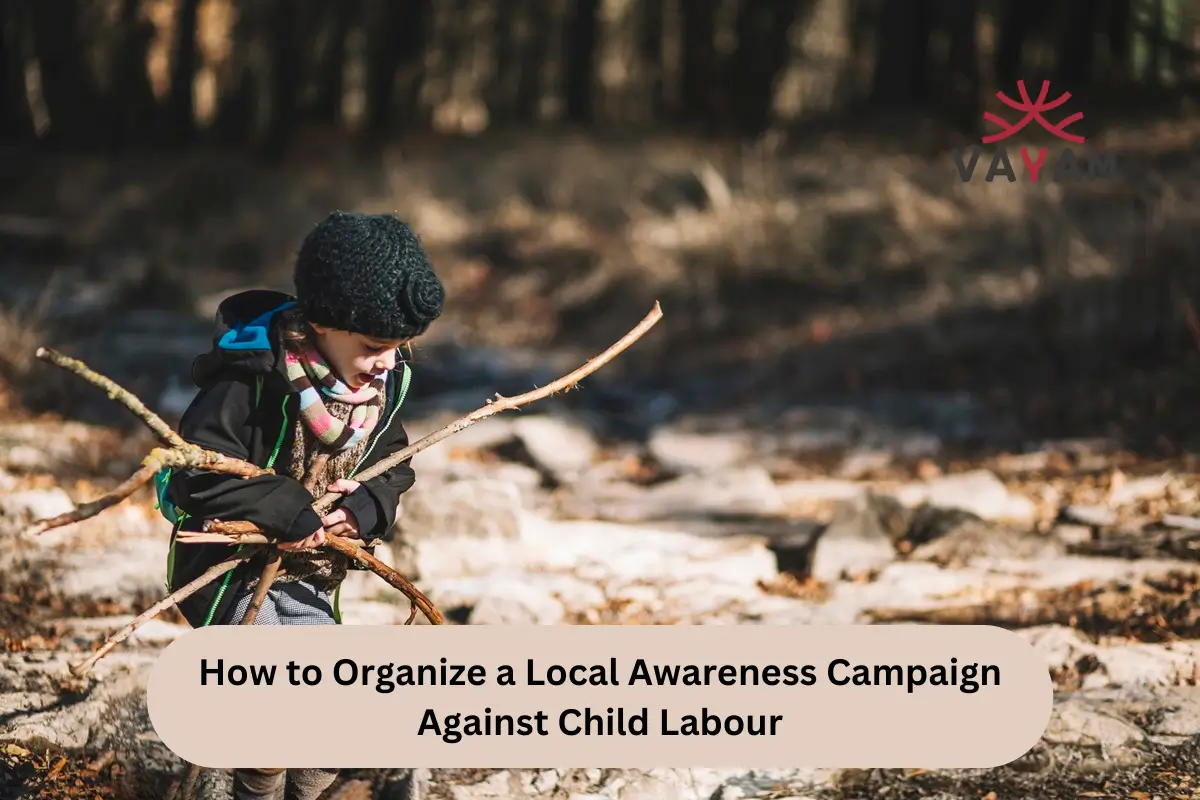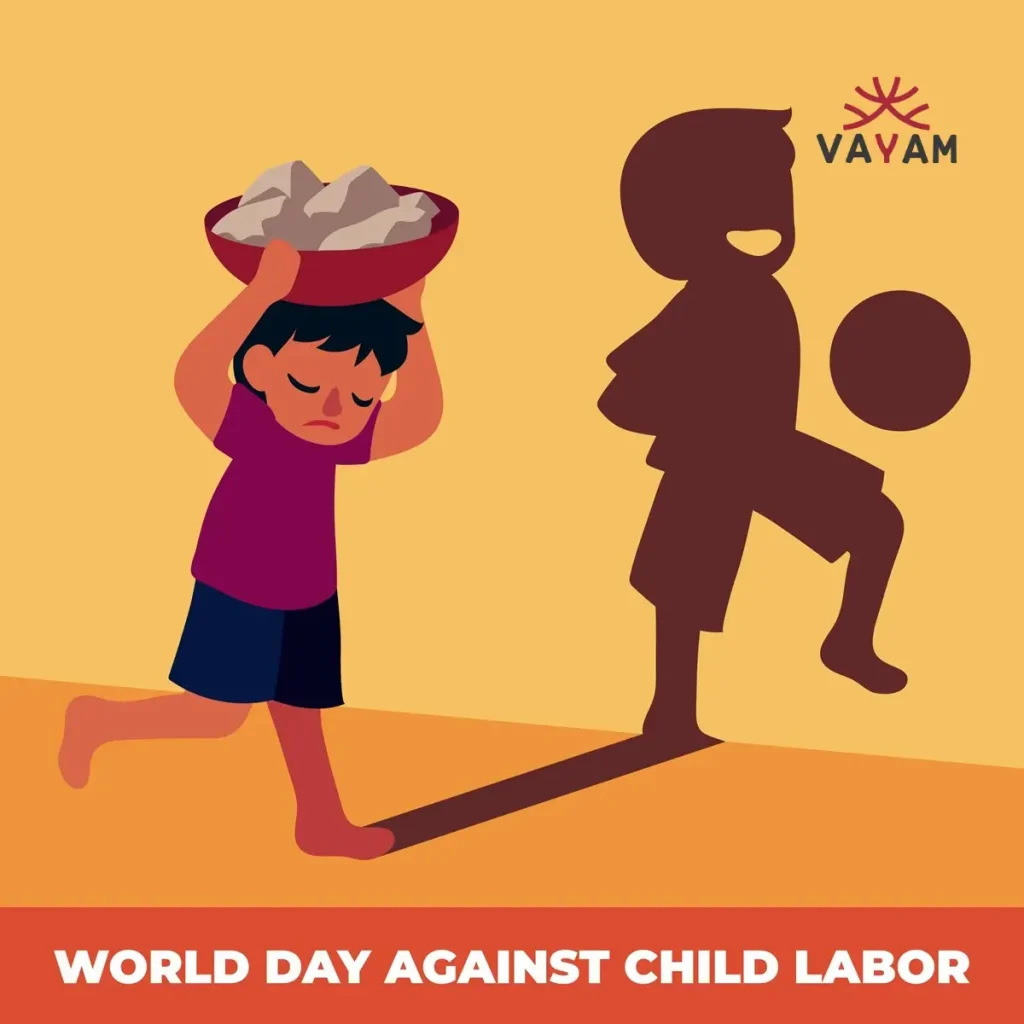
Child labour is a pressing global issue that affects millions of children worldwide. It robs them of their childhood, education, and future opportunities.
While the problem may seem overwhelming, local communities can make a significant impact by organizing awareness campaigns.
If you’re passionate about ending child labour and want to take action in your community, this blog will walk you through the steps to create an effective local awareness campaign.
Why Local Awareness Campaigns Matter
Before we dive into the steps, let’s talk about why local campaigns are so important. Child labour often thrives in the shadows, hidden from public view. By raising awareness locally, you can:
Shed light on the issue and educate your community.
Encourage people to take action, whether through donations, volunteering, or advocacy.
Pressure local businesses and policymakers to address the problem.
A well-organized campaign can inspire change and create a ripple effect that extends far beyond your community.
Step 1: Understand the Issue
To create an effective campaign, you need to understand the problem deeply. Research child labour statistics, causes, and consequences. Focus on how it impacts your local area. For example:
Are there industries in your region that employ child labour?
Are children in your community dropping out of school to work?
What laws or policies exist to combat child labour, and are they being enforced?
Understanding the issue will help you craft a compelling message and identify the most effective ways to address it.
Step 2: Define Your Goals
What do you want to achieve with your campaign? Setting clear goals will help you stay focused and measure your success. Your goals might include:
Educating 1,000 community members about child labour.
Collecting 500 signatures for a petition to local lawmakers.
Partnering with 10 local businesses to commit to child-labour-free practices.
Make your goals specific, measurable, and achievable.
Step 3: Build a Team
You don’t have to do this alone. Gather a group of like-minded individuals who share your passion for ending child labour. Your team might include:
Friends, family, and neighbors.
Local activists or nonprofit organizations.
Teachers, students, or community leaders.
Divide responsibilities based on each person’s strengths. For example, someone with design skills can handle posters and social media graphics, while a good public speaker can lead community meetings.
Step 4: Craft Your Message
Your message is the heart of your campaign. It should be clear, concise, and emotionally compelling. Focus on:
The impact of child labour on children and communities.
What people can do to help.
Why this issue matters to your local area.
Use simple language and avoid jargon. For example:
Instead of saying, “Child labour perpetuates cycles of poverty,” say, “When kids are forced to work, they miss out on school and struggle to build a better future.”
Step 5: Choose Your Tactics
There are many ways to raise awareness. Choose tactics that resonate with your community and fit your resources. Here are some ideas:
Social Media Campaigns
Social media is a powerful tool for spreading awareness. Create a hashtag for your campaign and share posts, videos, and infographics. Encourage your followers to share your content.
Community Events
Host events like rallies, workshops, or film screenings. These events can educate people and bring the community together.
Partnerships
Collaborate with local businesses, schools, and organizations. For example, a local café might display posters or donate a portion of their profits to your cause.
Petitions
Create a petition urging local lawmakers to take action against child labour. Use online platforms to collect signatures and present them to your representatives.
Media Outreach
Reach out to local newspapers, radio stations, and TV channels. Share your story and ask them to cover your campaign.
Step 6: Engage Your Community
A successful campaign requires community involvement. Here’s how to get people on board:
Start Conversations
Talk to people in your community about child labour. Share facts and stories that highlight the issue.
Use Visuals
Posters, flyers, and banners can grab attention and spread your message quickly.
Offer Solutions
People are more likely to get involved if they know how to help. Provide clear actions, like signing a petition, attending an event, or donating to a cause.
Celebrate Progress
Acknowledge and celebrate every milestone, no matter how small. This keeps your team motivated and shows the community that their efforts are making a difference.

Read More
How to Find Verified NGOs Helping Save the Girl Child
Top 5 NGOs Fighting for Girls’ Rights Support Them Now
Step 7: Measure Your Impact
Track your progress to see how well your campaign is working. For example:
Count how many people attended your events.
Monitor social media engagement (likes, shares, comments).
Keep track of petition signatures or donations.
Use this data to adjust your strategy and improve your campaign.
Step 8: Keep the Momentum Going
Awareness campaigns are just the first step. To create lasting change, you need to keep the momentum going. Here’s how:
Follow Up
Stay in touch with your supporters. Share updates on your progress and thank them for their contributions.
Advocate for Policy Change
Work with local lawmakers to strengthen laws against child labour and improve enforcement.
Support Affected Families
Partner with organizations that provide education, healthcare, and financial support to families affected by child labour.
Educate Continuously
Keep raising awareness even after your campaign ends. Host regular events, share updates on social media, and encourage others to join the cause.
Overcoming Common Challenges
Organizing a campaign isn’t easy, and you’ll likely face challenges along the way. Here are some common pain points and how to address them:
Lack of Resources
If you’re working with a limited budget, focus on low-cost tactics like social media and community events. You can also seek donations or sponsorships from local businesses.
Low Engagement
If people aren’t getting involved, try to understand why. Are your messages clear? Are you reaching the right audience? Adjust your approach based on feedback.
Burnout
Campaigns can be exhausting. Make sure to take breaks and delegate tasks to your team. Celebrate small wins to stay motivated.
Final Thoughts
Organizing a local awareness campaign against child labour is a powerful way to make a difference. By educating your community, inspiring action, and advocating for change, you can help create a world where every child has the opportunity to thrive.
Remember, change starts at the local level. Your efforts, no matter how small they seem, can have a big impact. So gather your team, craft your message, and take the first step toward ending child labour in your community.
Together, we can build a brighter future for children everywhere.
